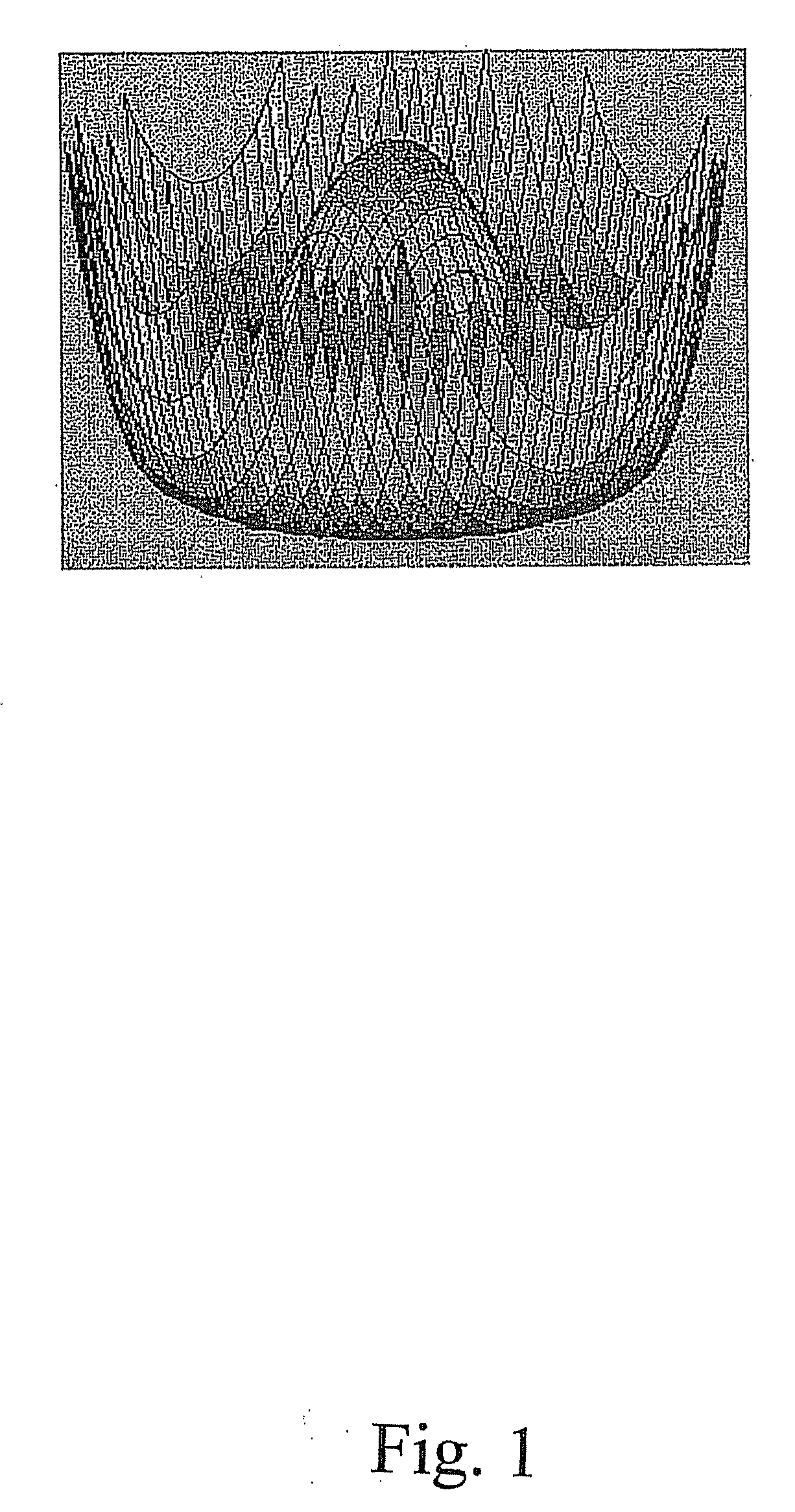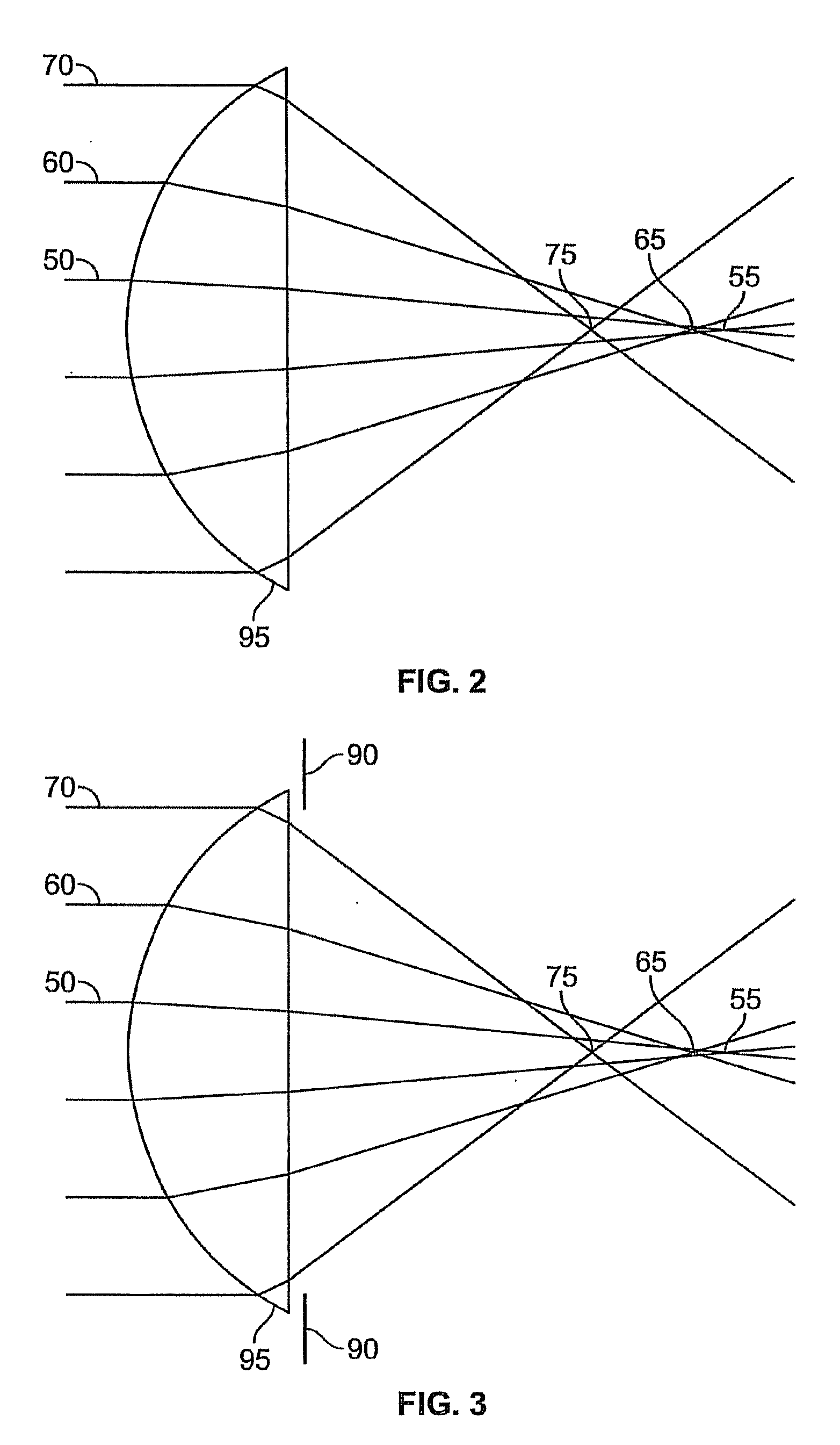Electro-optic lenses for correction of higher order aberrations
- Summary
- Abstract
- Description
- Claims
- Application Information
AI Technical Summary
Benefits of technology
Problems solved by technology
Method used
Image
Examples
first embodiment
[0046]FIG. 6B shows a front view of a patterned electrode layer for use in the lens of FIG. 6A for correcting spherical aberration of an eye according to the invention. The patterned electrode layer has a plurality of concentric electrode rings 104a. The plurality of electrode rings 104a are, e.g., concentric with the geometric center of the lens. The electrode rings cover a surface of the lens extending radially from the center of the lens to a radius of between approximately 10 mm and approximately 20 mm, although larger radii are possible. The electrode rings are, e.g., circular, although other geometries such as elliptical or polygonal geometries may alternatively be used. Although 16 electrode rings are shown, any number of rings may be used. The number of electrode rings is typically between 2 and 100, and preferably between 10 and 20. The electrode rings are optically transparent. The electrode rings are composed of any of the known transparent conductive metallics, e.g., ind...
second embodiment
[0049]FIG. 6E shows a front view of a patterned electrode layer for use in the lens of FIG. 6A for correcting spherical aberration of an eye according to the invention. The patterned electrode layer has a plurality of concentric electrode rings 104b. The electrode rings 104b of FIG. 6E are significantly narrower than the electrode rings 104a of FIG. 6B (e.g., by a factor of 50). For example, the width of each of the electrode rings 104b of FIG. 6E is less than approximately 100 μm, and preferably approximately 10 μm. Additionally, the spaces between adjacent electrode rings 104b of FIG. 6E are significantly wider (e.g., by a factor or 50). These spaces are occupied by a resistive material. The resistive material is more conductive than the insulating material used between the adjacent electrode rings 104a of FIG. 6B. These and other differences between the patterned electrode layers of FIGS. 6B and 6E are described in further detail below in reference to the cross-sectional views th...
third embodiment
[0074]FIG. 8A shows a front view of a patterned electrode layer for use in the lens of FIG. 6A for correcting all higher order aberration of an eye according to the invention.
[0075]The patterned electrode layer has a plurality of pixelated electrodes 162. Pixelated electrodes may be an array of electrodes localized at different positions on a surface of the lens substrate. In contrast with the electrode rings of FIGS. 6B and 6E, which encircle a lens surface and are concentric with a common point, each of the pixelated electrodes of FIG. 8A has a different center point (e.g., the center of the electrode itself). The pixelated electrodes may be individually addressable electrodes arranged to accommodate a complex voltage pattern to generate an optical phase profile to negate that caused by any or all of the higher order aberrations of the eye. Since the optical phase profile needed for correcting an arbitrary aberrated wavefront is typically asymmetric pixelated electrodes are needed...
PUM
 Login to View More
Login to View More Abstract
Description
Claims
Application Information
 Login to View More
Login to View More - R&D
- Intellectual Property
- Life Sciences
- Materials
- Tech Scout
- Unparalleled Data Quality
- Higher Quality Content
- 60% Fewer Hallucinations
Browse by: Latest US Patents, China's latest patents, Technical Efficacy Thesaurus, Application Domain, Technology Topic, Popular Technical Reports.
© 2025 PatSnap. All rights reserved.Legal|Privacy policy|Modern Slavery Act Transparency Statement|Sitemap|About US| Contact US: help@patsnap.com



